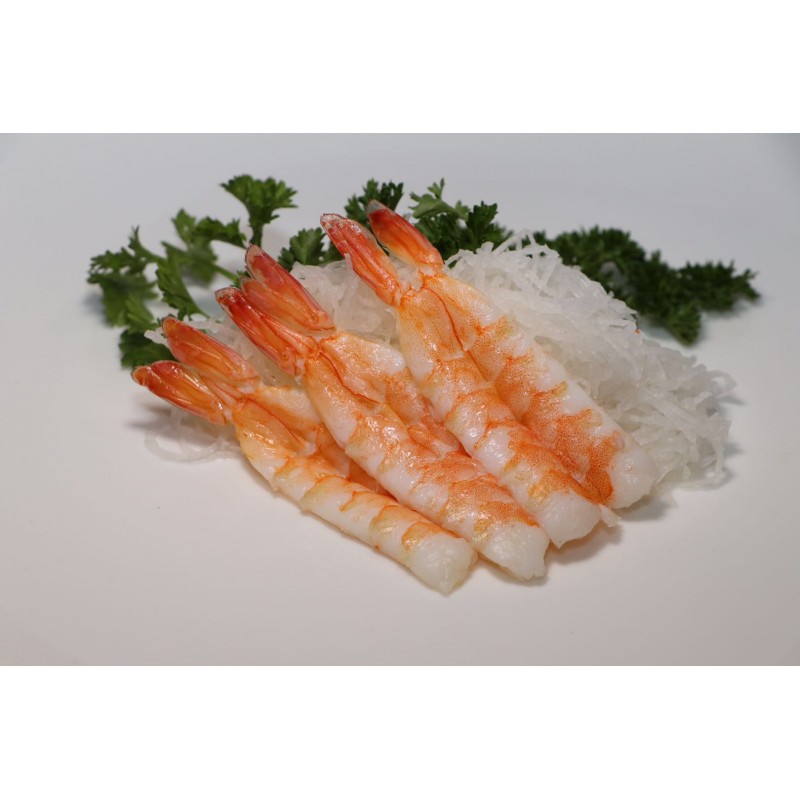
Shrimp Sashimi (2pcs)
This sweet shrimp sashimi (amaebi) salad is a fast recipe that can be made in 10 minutes. Last week, I bought some sweet shrimp sashimi from Don Don Donki. I immediately made this quick salad with avocado and ikura, served with Japanese wafu dressing. I saw a similar salad photo (with raw fish which I omitted) at Donki, which set off an instant.

Shrimp Sashimi stock image. Image of fresh, culture, plate 13919621
Sashimi, or eating raw thinly sliced food, is a traditional form of dining in Japan that goes back thousands of years.. There are several varieties of shrimp and prawns popular for sashimi. Sweet shrimp includes both the smaller amaebi and the larger botan ebi, while aka ebi (red shrimp) is high in fat and kuruma ebi (Japanese tiger prawns).
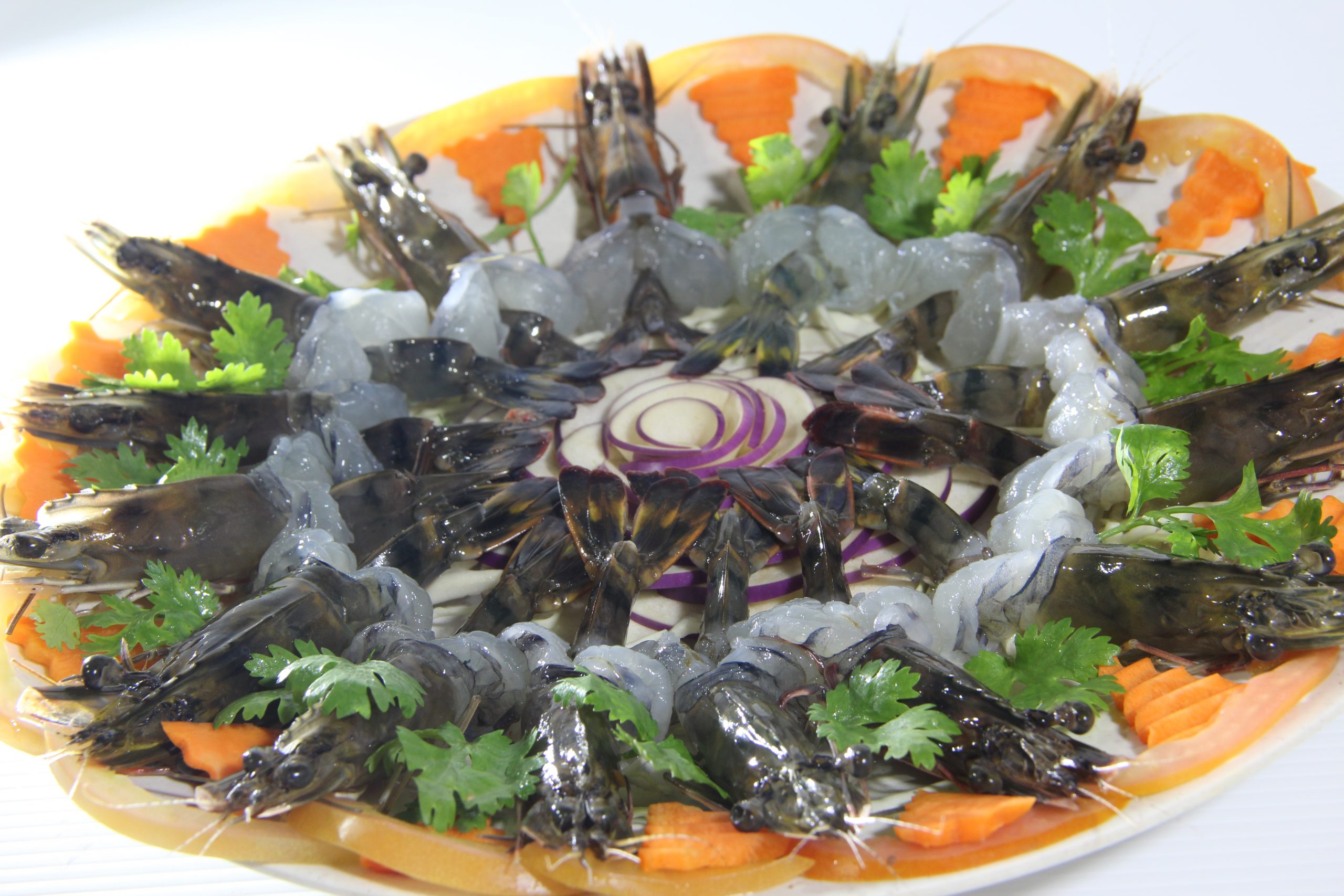
Thai Raw Shrimp Sashimi Vegfishfarm
1. Combine first 6 ingredients 2. Add the mayonnaise preparation to the shrimp and gently toss 3. Leave at room temperature not more than 20 minutes or if desired it can be served cold. 4. Just prior to serving add the 1/2 cup Tenkasu so that the crispiness is there with every chopstick bite 5. Dip in soy sauce if desired; pickled ginger as well.
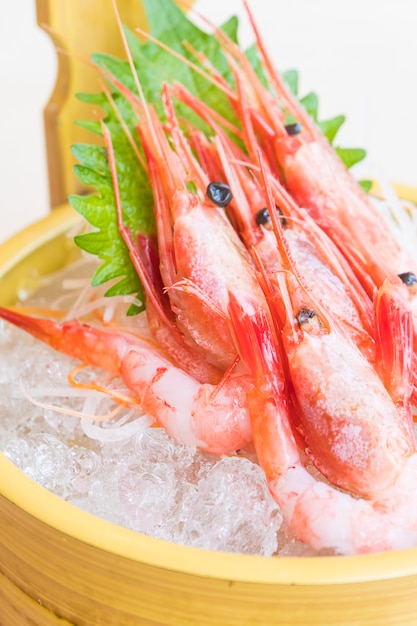
Free Photo Raw and fresh shrimp sashimi
Then, cut open the shrimp body from the back (or belly side), but don't cut it through to the other side. Remove the entrails. How to Make Amaebi Shrimp Sashimi. Prepare a bowl of hot water and iced water. Dip the prepared amaebi shrimp into the hot water for a few seconds. Then place the shrimp into the iced water immediately.

shrimp sashimi barfblog
Many people might think of sushi before they do sashimi, but the rice less preparation of seafood known as sashimi is an absolute delicacy. It requires the best sashimi-grade ingredients and skillful preparation. The result is a dish that allows the true flavor of the ingredients to sing. And the list of great sashimi includes high-quality shrimp. Like any other sashimi ingredient, there are.

[I ate] sweet shrimp sashimi. recipes food cooking delicious
The following varieties of sashimi are the most common in Japan. 1. Sake. Salmon sashimi that's served fresh cut. 2. Akami. The cheap cut of tuna with a dark red color. It's the lowest in fat and this is considered a bad thing. Tuna fat is acclaimed for its health properties in Japan due to its DHA content.

Everything You Need to Know About Shrimp Sashimi Sun Shrimp
Shrimp sashimi is a popular Japanese delicacy at Japanese restaurants that features raw, succulent shrimp. The word "sashimi" refers to thinly sliced raw fish or seafood, and in this case, it's all about mouthwatering shrimp slices. The dish highlights the natural sweetness and tenderness of the shrimp, making it a true seafood delight.

Shrimp Sashimi Stock Photo RoyaltyFree FreeImages
Ama ebi, or sweet shrimp, is a popular menu item at sushi restaurants. Sweet shrimp is often served raw, unlike regular ebi sushi. Nigiri and sashimi are the most popular preparations for this shrimp. The head is often fried and served with the raw body. Red or pink shrimp (aka ebi) is another common name for this type of shrimp.
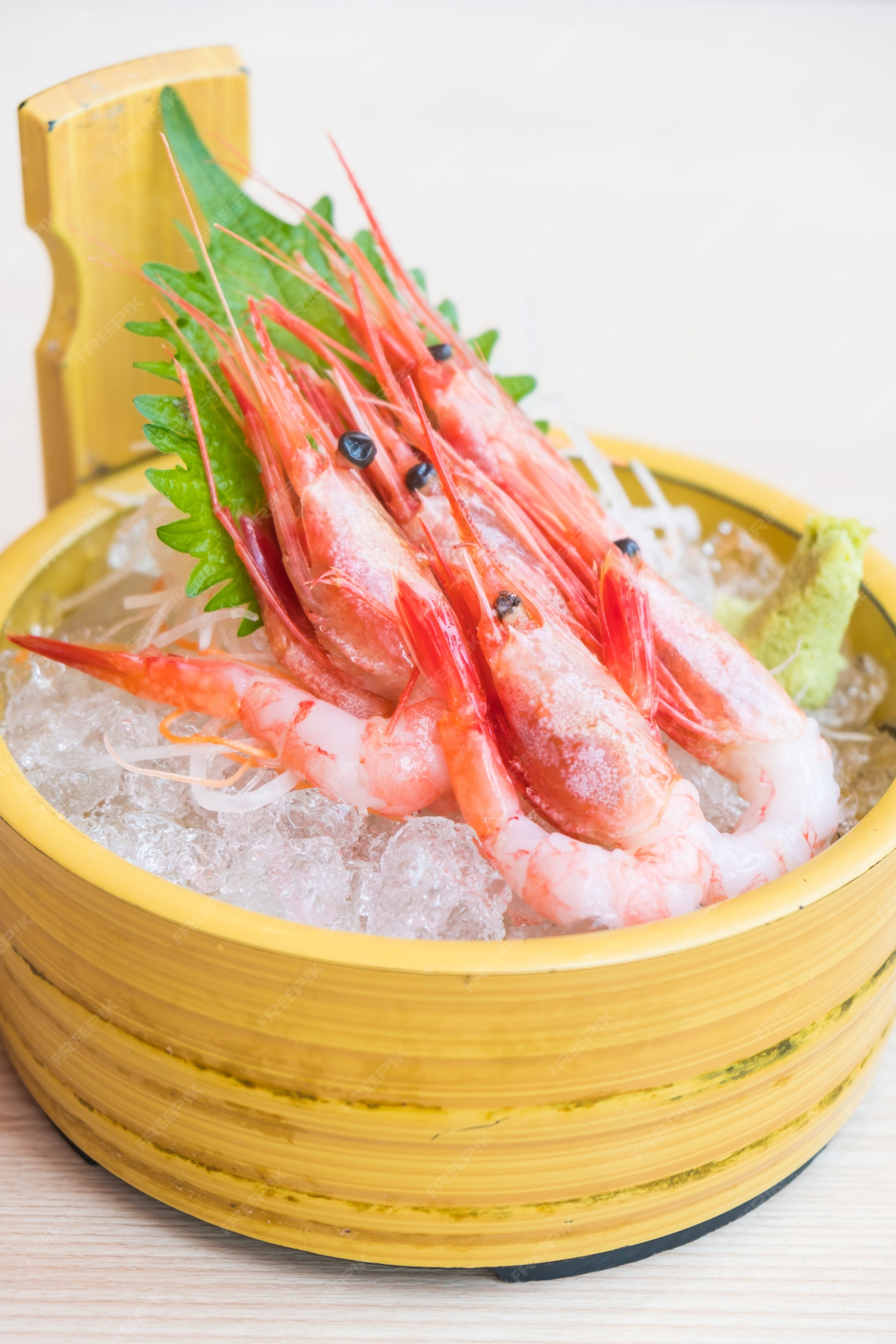
Free Photo Raw and fresh shrimp sashimi
Amaebi is a Versatile Ingredient. Amaebi is a traditional and popular item on every sushi restaurant menu. This soft, sweet, and translucent ingredient makes it a common item for sweet shrimp sashimi or a topping for nigiri and sushi rolls. Amaebi tastes best when eaten fresh. Typically, Amaebi sushi includes a raw, sweet shrimp lying over.

Shrimp sashimi Food, Sashimi, Shrimp
Shrimp sashimi is a traditional Japanese dish made from thin slices of fresh shrimp that are served raw, usually on a bed of shredded daikon radish. Different types of shrimp can be used to prepare the dish, and it is considered a delicacy in many areas. Upon venturing into Japanese cuisine, many people first get introduced to different types.
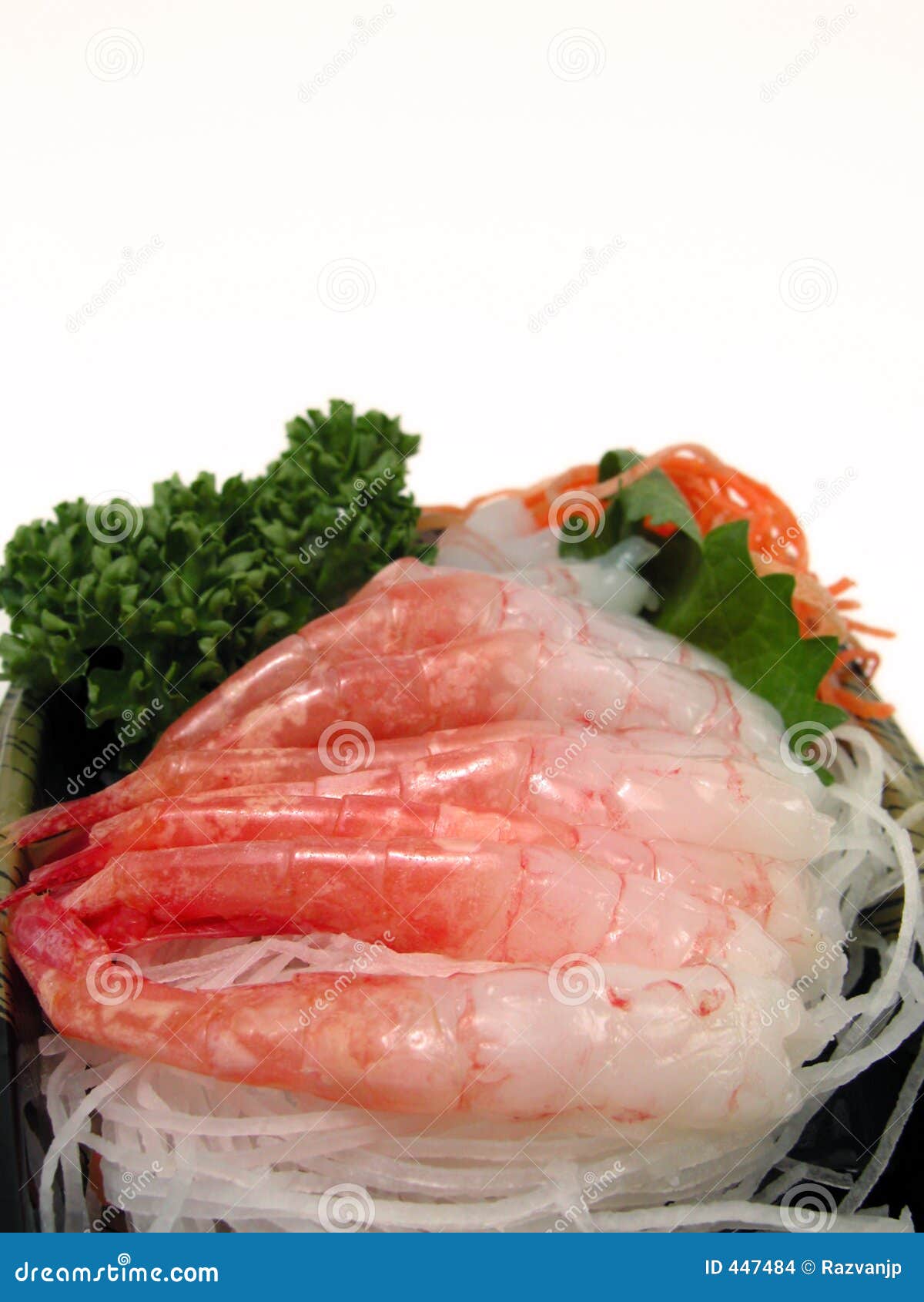
Shrimp sashimi stock photo. Image of detail, traditional 447484
Popular nigiri options include maguro (tuna), sake (salmon), hamachi (yellowtail), and ebi (shrimp). Sashimi favorites include salmon, tuna, and yellowtail, often served in a sashimi platter that offers a variety of fish types. Both dishes are typically accompanied by soy sauce, wasabi, and pickled ginger.

Fresh Shrimp Sashimi at Beijing 798 sushi spot. Photo Erin O'Hara
Use raw shrimp with the shells on. It is not important to have the heads. Shrimp without the shells are usually curled and you want straight shrimp for this. Cooking the shrimp with the shells on also helps to give them a pretty pink color. The right size for nigiri sushi for head-on shrimp is 20 to 30 per kilogram (10 to 15 per lb). They are.

Thai shrimp sashimi. Food, Yummy food, Sashimi
For making the Amaebi sashimi. Prepare two separate bowls, one containing hot water and another one containing iced water. Place the prepared and cleaned shrimps in the hot bowl for few seconds, then transfer it into the iced one. Dry the shrimps and arrange them into a serving plate. You can also arrange the fried heads beside them.

SHRIMP SASHIMI ZenSushi Bucuresti
Odori ebi (踊り海老 / 躍り海老, "dancing shrimp") is a sushi delicacy of Japan, and a form of sashimi. The sushi contains baby shrimp that are still alive and able to move their legs and antennae while being eaten. The meal is prepared quickly to keep the shrimp alive,.

Amaebi (Sweet Shrimp / Spot Prawns)
Then, cut open the shrimp body from the back (or belly side), but do not cut all the way through. Take out the entrails. HOW TO MAKE AMAEBI SHRIMP SASHIMI? Prepare a bowl of hot and cold water. For a few seconds, dip the prepared amaebi shrimp into the hot water. Then immediately plunge the shrimp into the iced water. Using paper towels, pat.
Beautiful and delicious salmon and sweet shrimp sashimi for dinner sushi
Start with fresh, whole shrimp. Next, skewer the lower part of the shrimp between the shell and the meat, keeping the shrimp straight. Once your ebi are skewered, plunge them into boiling saltwater. Master sushi chef Jiro Ono recommends three and a half to four minutes. But this might be less for smaller prawns.